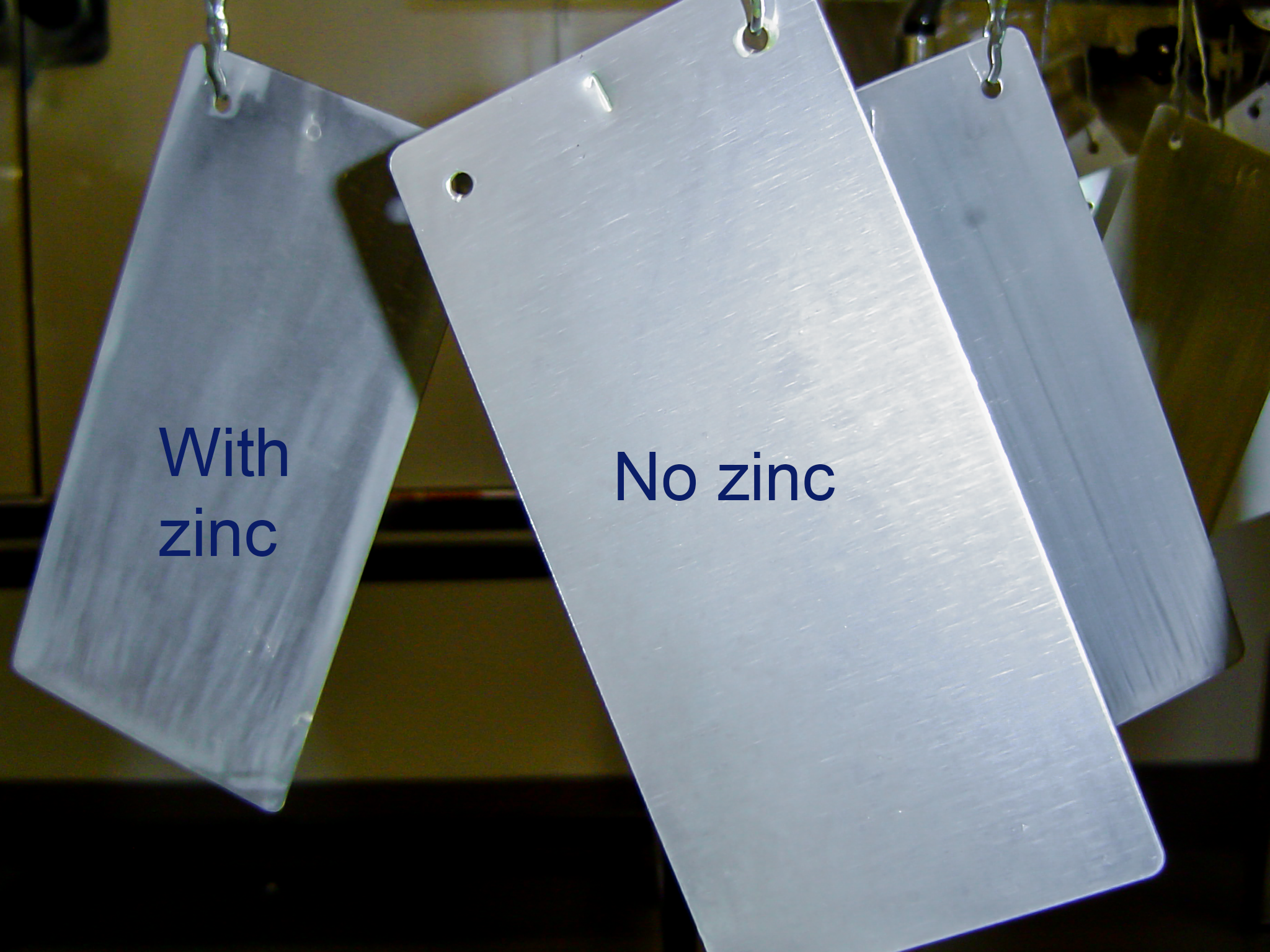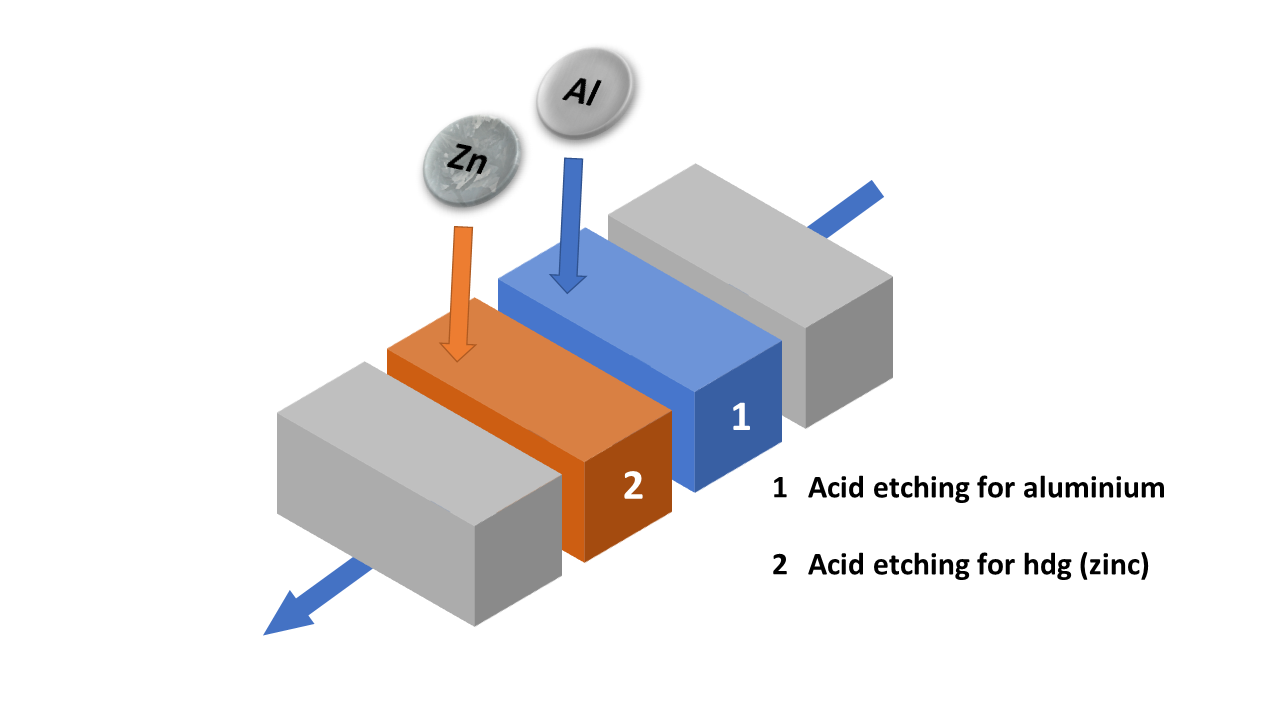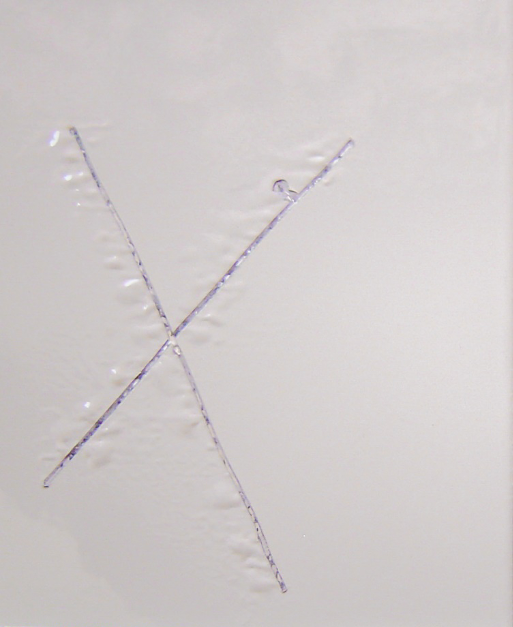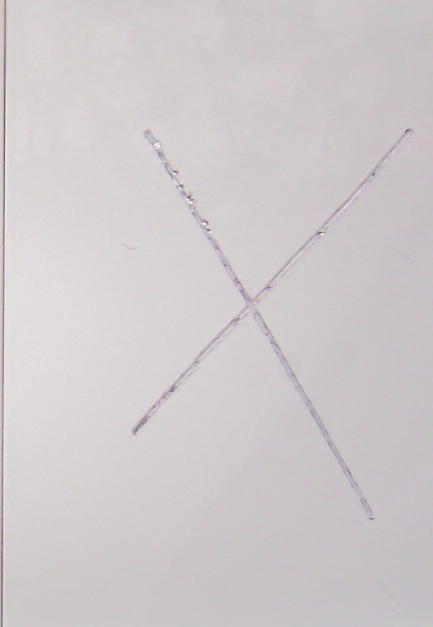Particularly in the field of job coating, a certain proportion of hot-dip galvanised surfaces has to be treated in addition to a large proportion of aluminium surfaces.
If only an acidic etching and degreaser is available for this in the plant, it becomes problematic. If both metals are pretreated in only one etching bath, both aluminium and zinc are brought into solution. Whenever aluminium surfaces are treated in a zinc-containing etching bath, zinc is deposited on its surface due to electrochemical processes. The higher the proportion of dissolved zinc, the darker and more visible the zinc-containing layer deposited on the aluminium surface usually becomes.

Dark discoloured aluminium surface after treatment in a zinc-containing, acidic etching
If this problem were only an optical change of the surface, it could be concealed with the subsequent powder coating. Unfortunately, however, there is a much bigger problem. Zinc deposits lead to a massive deterioration of the corrosion properties on the painted aluminium goods. If these surfaces are subjected to an acetic acid salt spray test, the first visible signs of corrosion can appear after only about 100 hours.
In a series of tests at Alufinish, it was found that corrosion protection can be impaired even at a low zinc content of 500 mg/L in the etching bath.
There are several ways to avoid this problem:
Do not pretreat galvanised goods in the aluminium pickling bath at all
Carry out frequent bath analyses and ensure that the zinc content remains far below 500 mg/L by discarding the bath.
Separate zinc and aluminium pretreatment and renew the zinc-contaminated etching bath before starting with the aluminium pretreatment.
Use separated etching baths for the pretreatment of the aluminium and galvanised surfaces.
If both metal surfaces have to be treated and no process separation is possible, two single etching baths should be used. In this case, it is important to ensure that the aluminium etching is followed by the zinc etching in the process sequence. If the sequence is reversed, zinc-containing etching residues can be introduced into the aluminium etching bath and also lead to the problems mentioned above. It should be noted that the first rinse after the zinc pickling bath is usually also contaminated. It should therefore not be used to rinse the etched aluminium.

Bath sequence of the separated etching baths for aluminium and zinc surfaces


